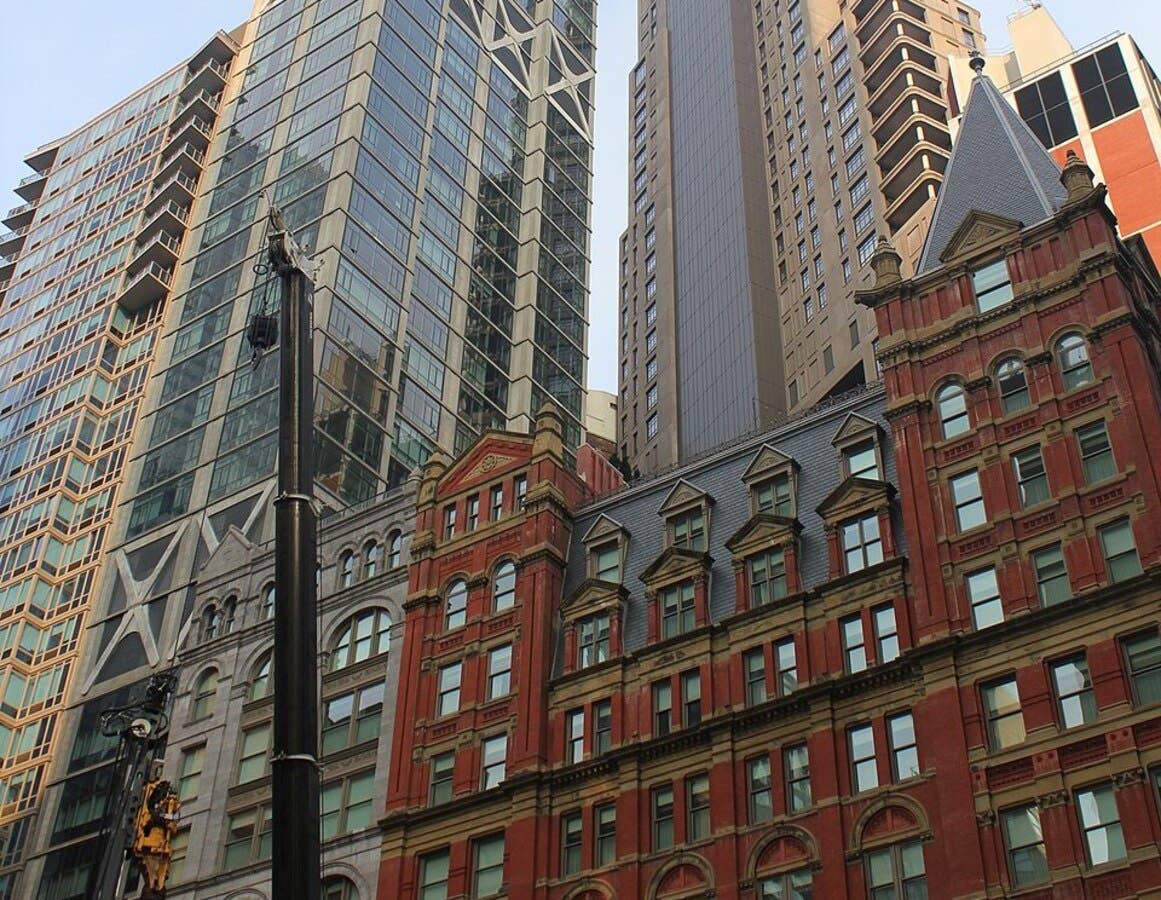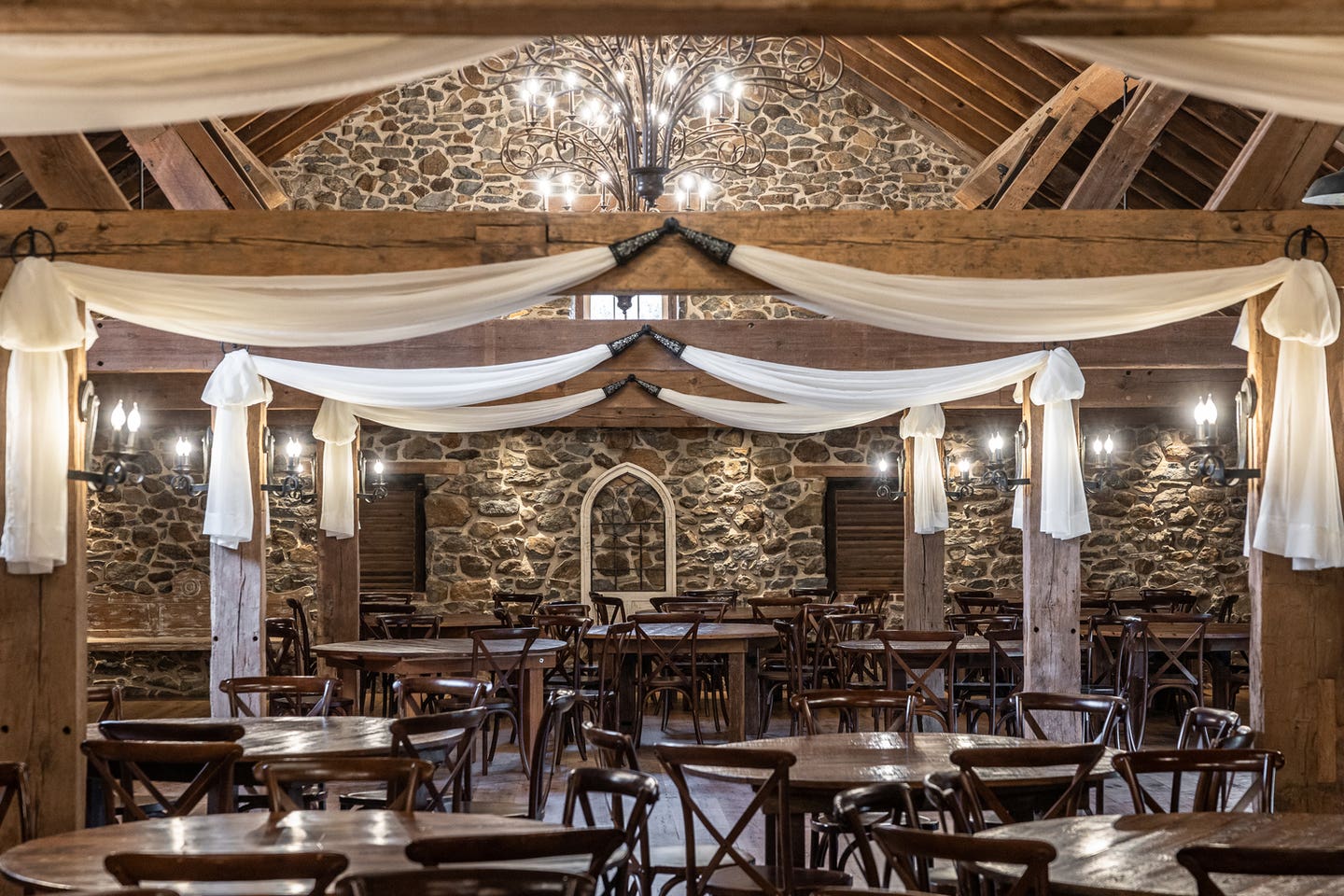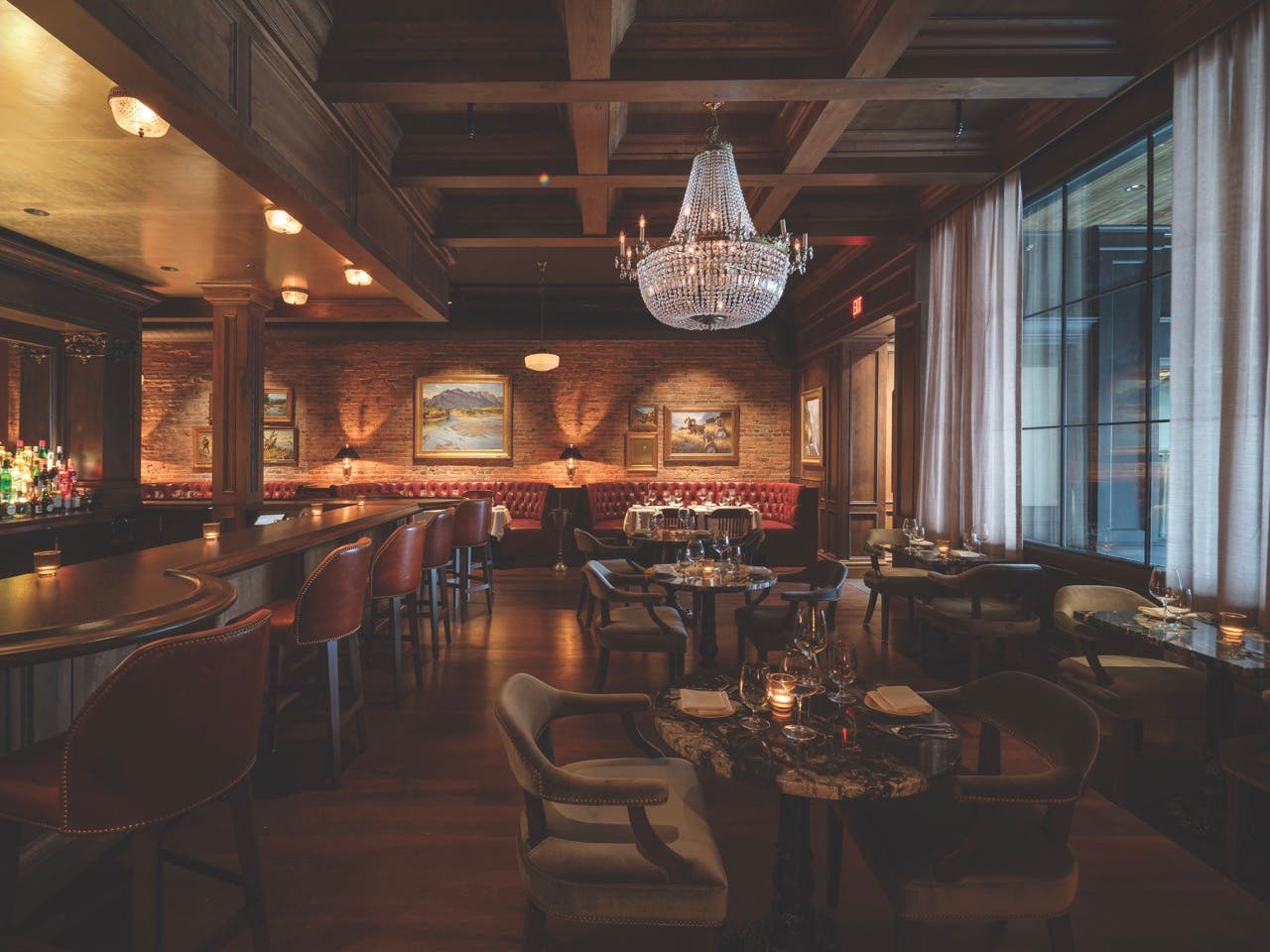
Restoration & Renovation
The Long-Term Restoration of Georgia’s Capitol
Project: Rehabilitation of Georgia State Capitol, Atlanta, GA
Architect: Lord Aeck Sargent, Atlanta; Susan Turner, AIA, Principal
Built 1884-1889 in the Classical Revival style, the Georgia State Capitol is a focal point in downtown Atlanta with its 75-ft. gilded dome topped with the 15-ft., 2,000-lb. statue of Miss Freedom. Designed by Willoughby J. Edbrooke and Franklin Pierce Burnham of the Chicago firm of Edbrooke and Burnham, the four-story limestone building reaches a height of 237 ft. at the dome. The building was completed for just under $1 million and was dedicated on July 4, 1889.
The main entrance on the west façade on Washington St. welcomes visitors via a four-story portico composed of six composite columns. The rear façade duplicates this entry and the Senate is located in the east wing, the House in the west wing. On the interior, white Georgia marble was used for floors and stairs, with pink Georgia Etowah flourie marble wainscot at the walls. Native Georgia woods were used, with cherry paneling lining the House and oak lining the Senate chambers. Statues, portraits and busts on every floor and on the exterior grounds celebrate well-known Georgia citizens such as Jimmy Carter and many others. The most recently installed statue honors Dr. Martin Luther King, Jr.
While its appearance is grand, this is basically a simple state capitol when compared to some others. A planned mural for the dome, for example, was never completed because of budget reasons. In addition, to save money, the exterior was made of limestone instead of the local white Georgia marble. Nevertheless, the capitol is well loved by its citizens and has served the state for generations. To this day, it still houses both the Senate and House chambers and their offices, the Governor’s offices, as well as other state offices and the Appropriations Room (formerly the Old Supreme Court Room). In 1977, the building was named a National Historic Landmark.
The first renovation began in 1929 and there have been many others over the years. The most recent round of renovations was launched in 1993 when the state created a Capitol Commission with the goal of planning for the preservation of the building and insuring it would continue as a working capitol building. At that time, Lord Aeck Sargent (LAS) was working in the building.
“We were working in the building in 1993, doing fire protection, when the state decided to create the commission and they asked us to be a part of it,” says Susan Turner, AIA, principal, LAS. Under the leadership of Chair Dr. Timothy Crimmins, the commission was made up of a diverse group of people including representatives from the House and Senate, as well as representatives from the offices of the governor and the secretary of state, the state historic preservation office and other key individuals. The head of the Georgia Building Authority was also on the commission. “This diversity positioned them well to make headway with the building,” Turner notes.
Historic American Building Survey
The commission launched a Historic American Building Survey (HABS) of the building and it was just about completed when suddenly a piece of plaster fell off the ceiling in one of the atria. “Fortunately, no one was hurt,” says Turner. “We were asked to evaluate the plaster in the building. We found that all of the horizontal surfaces were adhered to hollow clay tile, and that the bond was failing, so that immediately launched us into repair mode. There were acres of plaster in the building.” This meant that the master plan had to be postponed so the repair and restoration could go forward.
She adds that the HABS documentation was tremendously helpful in guiding the preservation of the capitol. “HABS had just begun using digital technology at the time. They hired a helicopter to fly around the dome to take photos and together we produced some of the first CAD-based HABS documents. In addition, historian Anne Farrisee wrote a complete history of the building.”
The restoration of the plaster was just the beginning. “One thing led to the next and that launched the restoration project,” says Turner. “We had to put in place the necessary research and planning to inform securing and restoring the public spaces.” The LAS team hired Frank Welch, a prominent finishes analyst, to analyze paint and clear wood finishes in the capitol. He found that in the public spaces the original painted finishes were only two colors, a pale peach and pale green, very different from the paint scheme that had been put in place in 1970s—multiple shades of blue and gold gild. There was concern that the public would not like these original colors, so Turner’s team created a mock-up area and fortunately the pale historic colors were very well received.
Based on that research and the favorable response to the historic colors, LAS went forward to design the public space restoration. This work took several years because it was complex and because it had to be done in phases and during the time that the House and Senate were not in session.
When they saw the work in the public spaces, the House and the Senate expressed interest in restoring their chambers—so once again the master plan was postponed. LAS proceeded with the restoration of these chambers and then they moved on to the other elaborate space, the Appropriations Room. These areas provided a number of challenges.
Many of the changes that had occurred over time were the result of integrating new technologies. “We started with the idea of reversibility,” says Turner. “The lifespan of technology is short, so we wanted to do everything so that it could be reversed without affecting the historic building.” To this end, they were able to create a unit that manages all of the technology and insert it into the historic legislators’ desks, where historic inkwells once existed. This allowed them to keep the original desks, which were in good condition.
Managing Acoustics
Acoustics was another unusual technology-related challenge. Turner explains that over the years, in order to deaden the sound, the State had taken out the original wood louvered shutters and put Styrofoam insulation and curtains in the windows. And, to hide this on the exterior, they had replaced the clear glass with green glass. In addition, acoustic tile had been glued on the ceiling. “Worst of all,” she points out, “at the edge of ceiling, the large (about 8 ft.) plaster coves had been removed and replaced with acoustic panels. The coves were an important feature, so this was very unfortunate.”
LAS removed the Styrofoam, the curtains and the green glass and replaced the shutters and clear glass in the windows, but then they were faced with acoustic issues. The solution was to save the remaining historic materials by using the element that required reconstruction, the cove, to solve the acoustics. “We reproduced the cove with one made of a perforated metal material. When it was painted, you couldn’t see the perforations,” says Turner. In addition to restoring the original appearance of the chambers, the new cove helped solve the acoustic problem by hiding sound-absorbing materials behind it. “This went a long way toward solving the acoustic problem,” Turner notes. “This allowed us to limit other acoustic treatment to minimal fabric panels on the walls in the balcony, custom-dyed to match the walls. We also installed a linear diffuser above the cove that helped to integrate the new air conditioning as well.”
An interesting challenge in both chambers involved how to manage the voting screens. Originally both the House and the Senate had fireplaces with large overmantels on either side of the speaker. These overmantels had been removed to make room for the voting boards. “We, of course, wanted to put the fireplaces and overmantels back,” says Turner. The president of the Senate, who was very interested in the restoration, came up with a solution. It involved moving the voting board to a position behind a panel located behind the speaker. When there’s a vote, this panel can be raised to reveal the voting board. The rest of the time the voting board is hidden. This move opened the wall spaces so the fireplaces and overmantels could be restored.
The House, however, decided to keep the voting boards visible at all times, even when not in session. This decision was based on the fact that school groups come for tours and the boards are a big part of the lesson. Turner was pleased with this decision because it provided two different viable solutions. Now one chamber is interpreted as it was historically and the other displays its contemporary function. “We got the best of both worlds,” she says.
Another problem, one typical to many restorations, was the miles of cable needed for new technology throughout the chambers. The LAS team was able to take advantage of the attics above the chambers to hide some of them, but they had to look for other paths. “We found that the capitol originally had warm air heated in the basement that traveled through flues, so there were a number of paths inside the solid masonry walls,” Turner explains.
In the former Supreme Court Room, LAS researched and recreated the original furnishings because most of the furniture had been removed. Technology was a challenge here too, and the solution was to hide most of it inside the replicated judicial bench.
The issue of historic colors came up again in the rehabilitation of the House and Senate Chambers and the Appropriations Room. Most of the historical research relied on black-and-white photos from the 1890s, which meant that the original colors couldn’t be seen. While Welsh’s paint analysis identified the many paint colors, the carpet colors were a mystery. LAS brought in Dr. William Seale, White House historian, to consult on the carpet colors, and he came up with a color palette for the House and the Senate Chambers. However, when it came to the Appropriations Room, there were no photos. By chance, Dorothy Olson, the curator of the Capitol Museum, found a piece of an old Brussels carpet in the back of safe, “The colors worked amazingly well with the historic colors,” says Turner. “This was serendipitous.”
At this point the Budget Director became interested in restoring office spaces, so the LAS team restored a suite of offices, again postponing the master plan. “We rehabilitated it back to the original materials and configuration,” Turner says. “Over the decades, different finishes and plywood paneling (we nicknamed it trailer paneling) has been added. We were hopeful that similar work could be done in all of the offices. That didn’t happen, but it did serve as a template for several other offices.”
The work in the offices was limited by changes that had been made over the years. Starting in 1960s and going through the 1980s, the growing government needed more space so they had created mezzanines between floors. “We couldn’t do anything that would be based on returning the original volumes because we were inhibited by the existence of the mezzanines,” Turner explains.
The team had looked at other ways to find more office space. One study had proposed creating large underground spaces, similar to what was done to the capitol in Texas. “They created an enormous underground addition tied into the historic building and it was very sensitively done,” says Turner, “but this would have been a huge project, and it never came to pass.”
The master plan was finally completed in 2005.
LAS worked on the interior for many years and then moved to the exterior. Miss Freedom, the exterior limestone and windows were restored and the roof was replaced. Most recent was the work on the four sets of monumental limestone stairs on each side of the building. “They had been cracking and moving for a long time,” says Turner, “so they needed major work.” She explains that they looked at different ways to brace the stairs, but ultimately decided to carefully remove the treads and pour new continuous concrete slabs and then return the treads. “This was a big job. We did the east side a few years ago and the west side in 2014, and there are two more to go.”
The cumulative total spent to date is approximately $78 million. Two factors have kept this figure down, says Turner. “One is we haven’t done the whole building. Secondly, our building is actually simple compared to other capitol buildings. They were very conscious of cost when they built the capitol, and were able to come in under budget. Other capitols built at the same time were much more expensive, more lavish.”
Three of the four main public spaces—the House, the Senate, and the Supreme Court Room (now the Appropriations Room)—are restored. Turner hopes to someday get to the fourth public space, the Senate Library. She notes that there’s always more to do, and even some of the early restoration work is now in need of repair. The support of the legislators and the Capitol Commission has been crucial. “We had very strong support for everything for a good number of years, up until the bottom fell out of the economy,” Turner says. “The Capitol Commission kept everyone informed. They were advocates for the project and that helped keep the momentum going and helped get funding.”
Restoration Timeline
1993 – Capitol Commission, HABS Survey, Plaster Failure
1995 – Public Space, House and Senate Chambers and Appropriations Room
2000 – Budget Office, First-floor Corridors, Georgia Capitol Museum, Exterior Restoration
2005 – Master Plan, Dome Structural Reinforcement, Miss Freedom Restoration, Roof Replacement, Exterior Stair Study, East Stair Restoration
2010 – Atria Plaster Repair
2013 – West Stair Restoration
Key Suppliers
Construction Manager: The Winter Construction Company, Atlanta, GA
Construction Manager West Stairs: Midwest Maintenance Inc., Piqua, OH
Historic Finishes Analysis: Welsh Color & Conservation, Inc., Bryn Mawr, PA
Historic Plaster Conservator: Architectural Conservation Services, Andrew Ladygo, Manchester by the Sea, MA
Historic Lighting Restoration & Replication: Jefferson Art Lighting Co., Ann Arbor, MI
West Stair Historic Lighting Replication: St. Louis Antique Lighting Co., St. Louis, MO
Window Restoration: Shenandoah Restorations Inc., Irmo, SC
Plaster Restoration: EverGreene Painting Studios, New York, NY and Finch Finishes, Nashville, TN
Decorative Painting: EverGreene Painting Studios, New York, NY and Conrad Schmitt Studios Inc., New Berlin, WI
Painting and Woodwork Restoration: Goodman Decorating Co., Atlanta, GA
Millwork: Mortensen Woodwork Inc., Union City, GA
Miss Freedom Statue Restoration: Heather & Little, Ltd., Markham, ON
Gold Leaf Cupola & Torch: R. Alden Marshall & Associates, Galveston, TX
Historic Hardware Restoration & Reproduction: Accurate Lock & Hardware, Norwalk, CT








